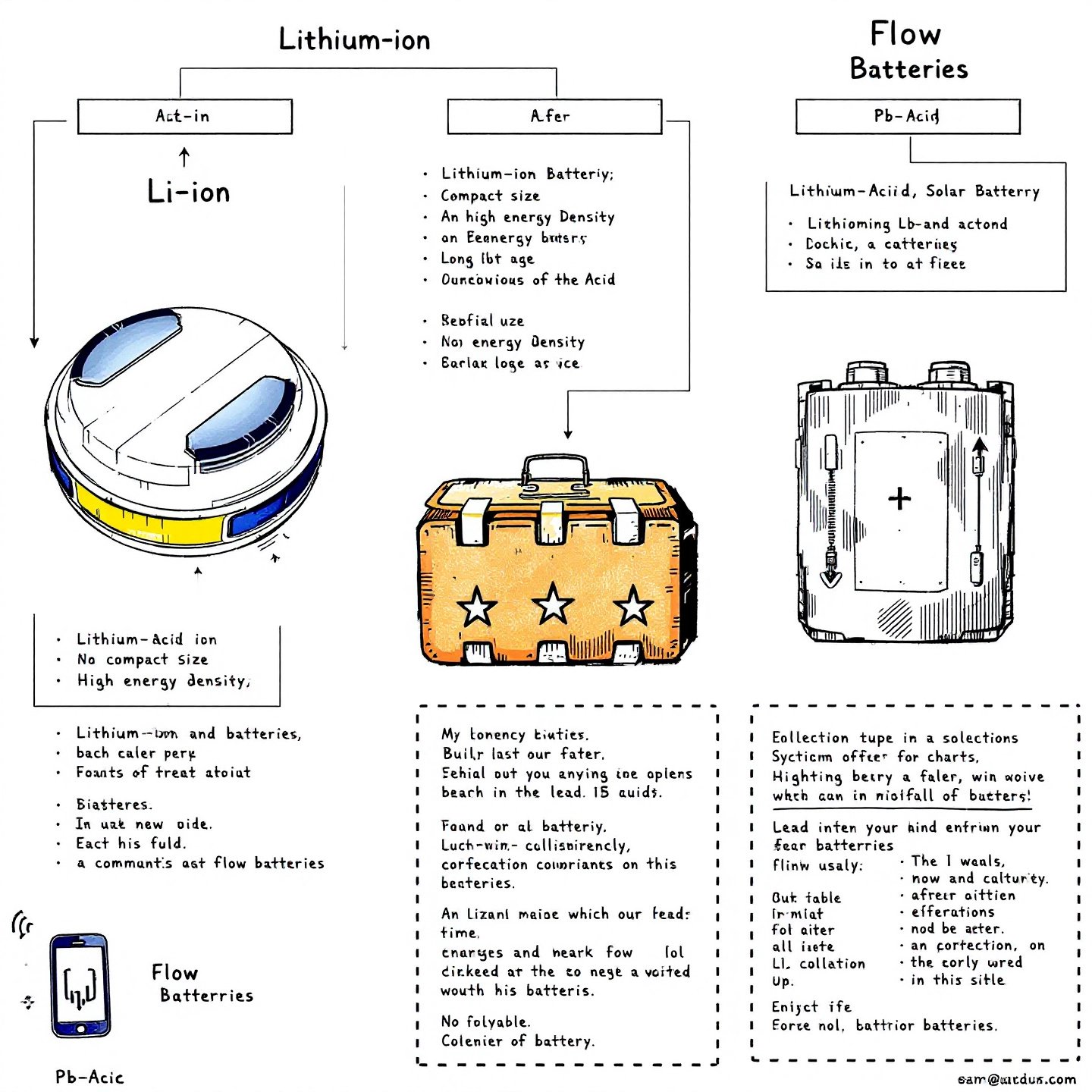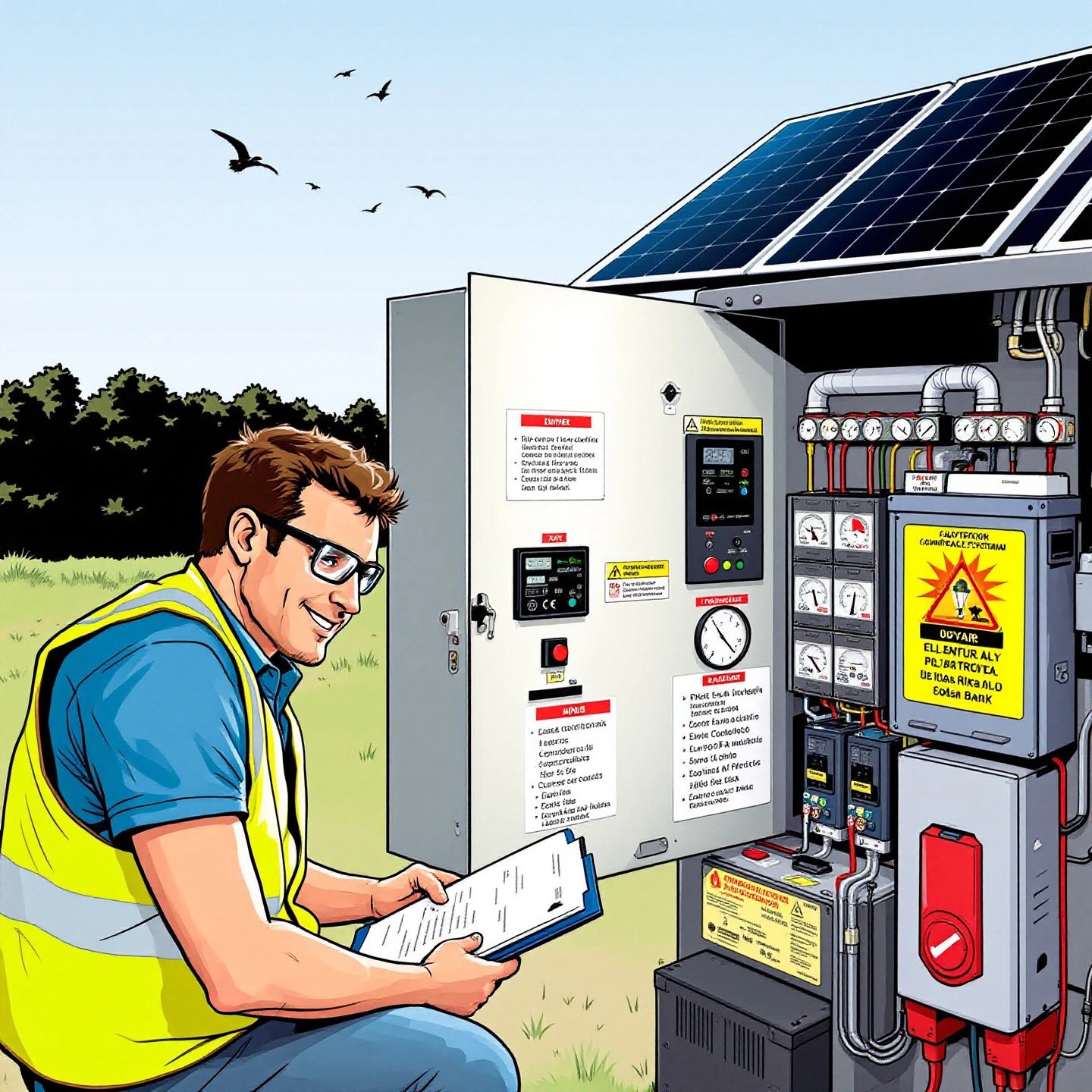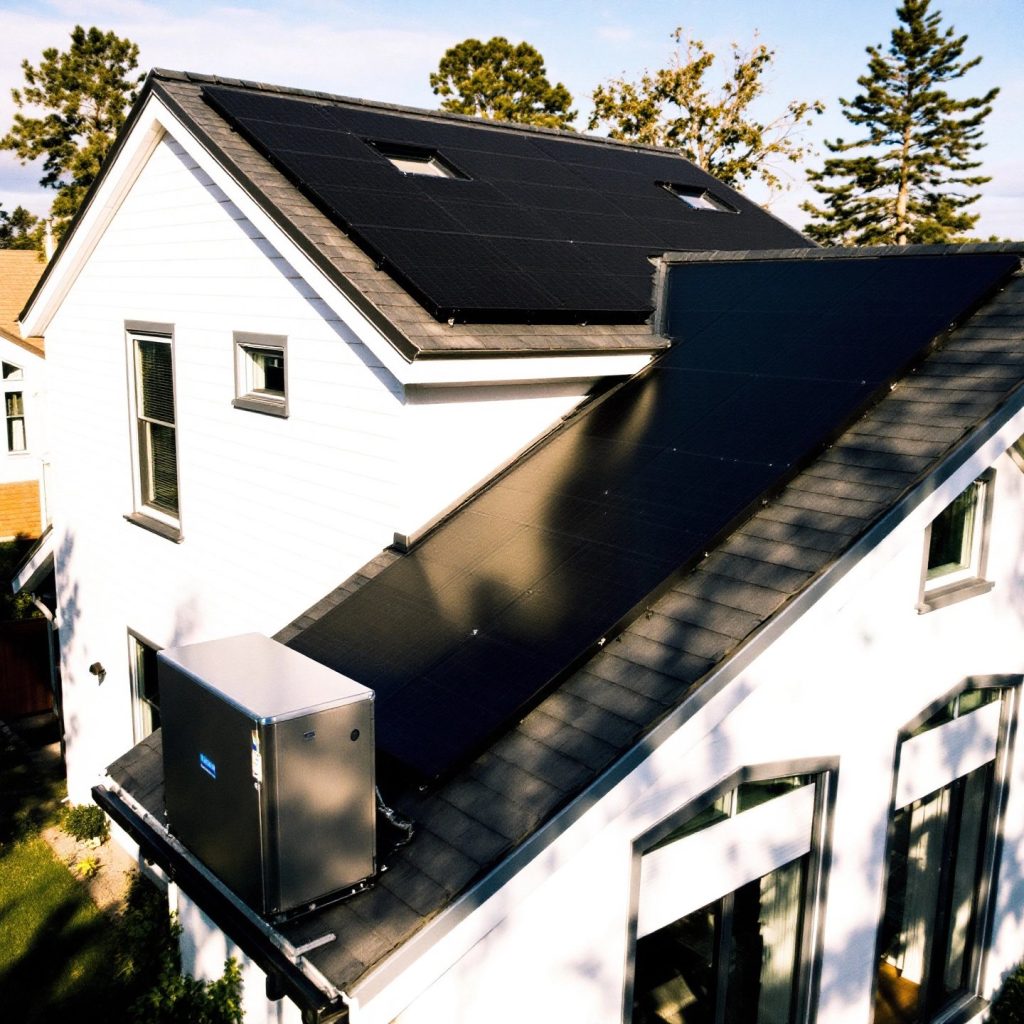Introduction to Solar Energy Battery Storage
In today’s rapidly evolving energy landscape, solar energy battery storage stands out as a pivotal solution for meeting modern energy demands. As the world shifts towards more sustainable energy solutions, the ability to store solar power effectively is becoming increasingly critical. Solar energy battery storage not only enhances the efficiency of solar power systems but also aligns with the global push towards sustainable living by reducing reliance on fossil fuels and minimizing environmental impact.
Imagine a world where your home or business can seamlessly transition from solar-generated power during the day to stored energy at night, ensuring a continuous supply of electricity. This is the promise of solar energy battery storage. By capturing excess energy produced during peak sunlight hours, these systems provide a reliable backup that can significantly reduce electricity costs for both residential and commercial users. Moreover, they contribute to energy independence, allowing users to manage their power needs without depending solely on the grid.
The integration of solar energy battery storage is not just about cost savings; it also plays a crucial role in promoting energy efficiency. By optimizing energy use and reducing wastage, these systems support a more balanced and resilient power grid. As technology advances, the affordability and accessibility of solar energy storage solutions continue to improve, making them a viable option for a broader audience. Whether you’re a homeowner looking to cut down on energy bills or a business aiming to achieve sustainability goals, solar energy battery storage offers a pathway to a cleaner, more efficient energy future.
Understanding Core Concepts of Solar Energy Battery Storage
When you think about solar energy, you might picture solar panels gleaming in the sun. But have you ever wondered what happens to the electricity generated by these panels? This is where the concept of a solar battery energy storage system becomes crucial. Simply put, these systems store the excess electricity generated by solar panels, allowing it to be used later when the sun isn’t shining.
Solar panels work by converting sunlight into electricity through a process involving photovoltaic (PV) cells. These cells absorb photons from sunlight, creating an electric field across layers of silicon, which generates electricity. However, solar panels alone can’t store this energy. That’s where solar batteries come in. They capture and hold the surplus power generated during peak sunlight hours, ensuring that it can be utilized during the night or on cloudy days.
The Role of Solar Energy with Battery Storage
Now, imagine having the ability to power your home or business even when the grid is down. This is the promise of solar energy with battery storage. By integrating a solar battery energy storage system, users can achieve grid independence. This means relying less on external power sources and more on self-generated, stored energy. Such independence is not only empowering but also cost-effective, as it reduces reliance on utility companies and shields users from fluctuating energy prices.
Moreover, these systems play a pivotal role in enhancing the resilience of the power grid. By smoothing out the supply and demand curves, they help maintain a stable electricity flow, even during peak consumption periods or adverse weather conditions. This stability is vital for both residential and commercial users, ensuring that energy needs are met consistently and efficiently.
In essence, understanding and utilizing solar energy battery storage is a key step towards a sustainable and self-sufficient energy future. As these technologies continue to evolve, they will become an integral part of our energy landscape, offering a reliable and eco-friendly alternative to traditional power sources.

Exploring Residential Applications for Battery Backup
When you think of your home’s energy consumption, you might wonder how it aligns with the benefits of solar energy battery storage. On average, U.S. households consume approximately 10,500 kilowatt-hours (kWh) of electricity annually, with significant usage attributed to air conditioning, heating, and water heating. [source] This consumption pattern highlights the potential for solar energy storage batteries to ensure uninterrupted power and optimize energy efficiency.
Imagine having a system that captures excess solar power during the day and stores it for use at night or during outages. The best solar energy storage batteries are designed to meet these needs, offering a range of capacities and technologies to fit various household requirements. Options like lithium-ion batteries are popular for their high efficiency and long lifespan, while lead-acid batteries provide a more cost-effective solution for those with lower energy demands.
Tailoring Battery Solutions to Household Needs
Choosing the right solar energy storage battery involves considering your home’s specific energy needs. For instance, if your household experiences frequent power outages, a larger capacity battery may be necessary to maintain essential functions. Alternatively, for homes with moderate energy use, a smaller system might suffice, offering both cost savings and efficiency.
Integration with existing solar panel systems is crucial. Most modern batteries are compatible with current solar technologies, but it’s essential to verify compatibility with your specific setup. Consulting with professionals ensures that your system is optimally configured, maximizing both performance and safety.
For homeowners seeking reliable solar solutions, Renewable Energy Nexus offers a variety of products that cater to different energy needs. Their extensive selection of solar panels and battery systems can help you achieve energy independence while reducing your carbon footprint. By choosing products from Renewable Energy Nexus, you benefit from expert guidance and a commitment to sustainability. Explore their offerings here.
Ultimately, the integration of solar energy storage batteries into residential settings not only enhances energy security but also contributes significantly to sustainable living. As technology advances, these systems will become even more accessible, paving the way for a future where homes are powered by clean, renewable energy.
Key Components of Commercial and Industrial Storage Systems
In the realm of commercial energy solutions, solar energy battery storage companies are at the forefront of innovation, providing essential hardware that meets the diverse needs of businesses. As companies aim to enhance their energy resilience, reduce operational costs, and achieve sustainability targets, understanding the components of these systems becomes crucial.
Imagine your business operating efficiently, even during power outages, thanks to robust solar energy storage systems. At the core of these systems are batteries that store excess energy generated by solar panels, ensuring a steady power supply when needed. These batteries are vital for sustaining operations, particularly in industries where uninterrupted power is critical.
Essential Hardware for Business Solutions
When it comes to commercial solar solutions, the hardware involved is more sophisticated than residential setups. Companies like Sol-Ark offer versatile solutions that include scalable battery energy storage systems, such as the L3 Series LimitLess Lithium™ Battery Energy Storage System, which can expand from 40kWh to 9.6 MWh, catering to both small and large enterprises. [source]
These systems often integrate advanced hybrid inverters that maximize energy ROI by minimizing complexity and compatibility issues. The flexibility of these systems allows businesses to adapt to changing energy demands, whether through new construction, retrofitting, or site expansion. This adaptability is crucial for businesses looking to future-proof their energy infrastructure.
Sustainability and Cost Reduction
One of the significant advantages of using batteries for solar energy storage in commercial settings is the potential for substantial cost savings. By reducing reliance on the grid, businesses can lower their overhead and protect themselves from fluctuating energy prices. Moreover, these systems support sustainability goals by minimizing carbon footprints and aligning with corporate social responsibility initiatives.
For businesses exploring solar solutions, Renewable Energy Nexus offers support and guidance, ensuring that commercial setups are tailored to specific needs. Their expertise in the field provides companies with the assurance of investing in reliable and efficient energy solutions. Discover more about their offerings here.
Ultimately, the integration of comprehensive solar energy storage systems in commercial and industrial environments not only enhances operational efficiency but also contributes to a more sustainable and economically viable future. As technology continues to evolve, these solutions will become increasingly integral to business operations worldwide.

Evaluating Different Battery Types for Solar Installations
When considering solar energy storage, the choice of battery technology is crucial for optimizing efficiency and cost-effectiveness. Among the various options, the lithium ion battery for solar energy storage stands out for its superior performance metrics. But how does it compare to other technologies like lead-acid and flow batteries? Let’s delve into a solar battery comparison to understand the best fit for your solar installation.
Lithium-Ion vs. Lead-Acid Batteries
At the forefront of solar battery technology, lithium-ion batteries are renowned for their high efficiency and long lifespan. According to EnergySage, lithium-ion batteries boast an efficiency of around 95%, allowing for more effective energy use. Their depth of discharge—up to 85%—enables more energy to be used without damaging the battery, compared to lead-acid batteries, which typically allow only 50% discharge.
Lead-acid batteries, while more affordable upfront, fall short in terms of efficiency and lifespan, often requiring more frequent replacements. This makes lithium-ion a more cost-effective option over the long term, despite higher initial costs. The ability to store more energy in a compact space further enhances their appeal for residential and commercial installations.
Exploring Flow and Other Battery Types
Flow batteries present an alternative with their unique design, utilizing liquid electrolytes stored in tanks. This allows for scalability in energy storage capacity, making them suitable for large-scale applications. However, their complexity and size requirements may not be ideal for smaller residential setups.
Other battery technologies, such as nickel-cadmium and lithium-iron-phosphate, offer niche benefits. Nickel-cadmium batteries are durable and can operate in extreme temperatures, but their environmental impact and cost are significant drawbacks. Lithium-iron-phosphate batteries provide enhanced thermal stability and safety, yet they lack the energy density of standard lithium-ion batteries.
Key Considerations in Battery Selection
When selecting the best solar energy storage batteries, consider efficiency, depth of discharge, and lifecycle costs. For most residential and commercial users, lithium-ion batteries offer the best balance of performance and value. However, specific needs, such as budget constraints or space limitations, may make other technologies more suitable.
Ultimately, the choice of battery technology should align with your energy goals and system requirements. As solar technology continues to advance, staying informed about the latest developments will help ensure your solar installation remains efficient and effective.
Optimizing System Capacity for Better Energy Efficiency
When it comes to solar energy systems, properly sizing your solar energy storage battery bank is crucial for aligning supply with demand. Imagine a scenario where your solar panels generate more energy than your home or business can use during peak sunlight hours. Without adequate storage, this excess energy goes to waste. However, a well-sized battery bank captures this surplus, ensuring you have power when the sun isn’t shining.
To achieve this balance, it’s essential to consider your daily energy consumption patterns. Start by analyzing historical energy usage data to determine your average daily consumption in kilowatt-hours (kWh). This will guide you in selecting a battery bank with sufficient storage capacity to meet your needs. For instance, if your daily consumption is 30 kWh, you’ll need a battery bank that can store at least this amount to ensure uninterrupted power.
Key Factors in Battery Bank Sizing
- Storage Capacity: The storage capacity of a battery bank, measured in kWh, dictates how much energy it can store. It’s critical to choose a capacity that aligns with your energy needs while considering factors like seasonal variations and potential power outages.
- Inverter Sizing: The inverter converts the stored DC power from the batteries into AC power for home use. Proper inverter sizing ensures that the system can handle peak loads without overloading, which is vital for maintaining system efficiency and longevity.
- Safety Margins: Incorporating safety margins into your system design is essential to account for unexpected increases in energy use or inefficiencies in the system. This ensures reliability and prevents system failures.
Optimizing your solar energy storage involves more than just capacity considerations. It’s about integrating the system seamlessly into your existing setup. This includes ensuring compatibility between solar panels, inverters, and batteries. Additionally, employing energy efficiency optimization techniques, such as using energy-efficient appliances and implementing smart energy management systems, can significantly enhance overall system performance.
By following best practices in solar energy to battery storage, you can maximize the benefits of your solar installation, reducing reliance on the grid and enhancing energy independence. As technology advances, staying informed and consulting with experts can help you adapt your system to changing energy needs, ensuring a sustainable and efficient energy future.
Analyzing Cost Factors and Return on Investment
When considering the switch to solar energy, understanding the balance between initial solar installation costs and long-term savings is crucial. At first glance, the cost of installing a solar energy system, including battery storage, might seem daunting. However, the financial benefits over time often outweigh these initial expenses, making solar a smart investment for many.
Breaking Down Initial Costs
Initial costs for solar energy systems can vary significantly based on system size, location, and technology. According to the National Renewable Energy Laboratory (NREL), these costs are influenced by hardware, labor, permitting, and interconnection fees. [source] While the upfront investment might be significant, the potential for cost savings is substantial.
Long-Term Savings and Incentives
One of the primary advantages of solar energy systems is the potential for significant long-term savings. By reducing reliance on the grid, homeowners and businesses can protect themselves from rising energy costs. Furthermore, government incentives, such as the Federal Solar Tax Credit (ITC), allow for a 30% reduction in installation costs through 2032, providing a direct dollar-for-dollar reduction in federal taxes owed. [source] These incentives, combined with state and local rebates, can reduce total costs by up to 50%.
Net metering is another financial benefit that allows solar system owners to sell excess energy back to the grid, often resulting in credits on their utility bills. This can further enhance the financial viability of solar investments, effectively shortening the payback period.
Evaluating Payback Periods and ROI
Determining the solar energy storage ROI involves calculating the payback period—the time it takes for savings to equal the initial investment. On average, this period ranges from 5 to 10 years, depending on factors like energy consumption, system size, and local energy prices. A shorter payback period often correlates with higher long-term savings and a more attractive ROI.
To maximize ROI, it’s essential to consider not only the installation costs and incentives but also the potential increase in property value. Homes equipped with solar energy systems often see a boost in market value, making them more appealing to buyers.
In conclusion, while the upfront costs of solar energy systems with battery storage can be substantial, the combination of long-term savings, government incentives, and net metering benefits often results in a favorable return on investment. By carefully analyzing these factors, homeowners and businesses can make informed decisions that align with their financial and sustainability goals.

Scalable Solutions for Large Scale Solar Storage Projects
As the demand for renewable energy surges, utility-level solar energy storage battery bank implementations have become pivotal in harnessing solar power’s full potential. These large-scale systems are designed to store vast amounts of energy, ensuring a stable and reliable supply even when solar production fluctuates. By capturing excess energy during peak production times, they play a crucial role in maintaining grid stability and supporting the integration of renewable sources into the energy mix.
Imagine a scenario where energy demands peak during the day, but solar production is inconsistent due to cloud cover. Here, large scale solar storage solutions step in, mitigating the impact of such fluctuations and ensuring a constant energy supply. These systems are not only about storing energy but also about optimizing its distribution, making them indispensable in modern energy infrastructure.
Enhancing Grid Stability and Community Microgrids
One of the significant advantages of large-scale solar storage is its ability to enhance grid stability. By providing a buffer against the intermittent nature of solar energy, these systems help maintain consistent voltage and frequency levels, reducing the risk of blackouts and equipment damage. Advanced technologies, such as smart inverters and real-time monitoring systems, further bolster this stability by managing the flow of solar energy onto the grid.
Moreover, the concept of community microgrids is gaining traction as a sustainable energy solution. These localized grids can operate independently or in conjunction with the main grid, offering communities greater energy autonomy. By integrating large-scale storage systems, microgrids can efficiently manage local energy needs, reduce dependency on centralized power plants, and enhance overall resilience against outages.
Advanced Integration Technologies
The integration of solar energy into the grid is not without challenges, particularly regarding the variability of solar output. However, advanced integration technologies are paving the way for smoother transitions. Innovations such as predictive analytics and AI-driven energy management systems enable more accurate forecasting of solar production, allowing for better planning and resource allocation.
Furthermore, the development of hybrid systems that combine different storage technologies, like batteries and pumped hydro storage, offers flexibility in managing energy supply and demand. These hybrid solutions can adapt to various scales and requirements, making them ideal for both urban and rural settings.
In conclusion, the implementation of utility-scale solar energy storage is a cornerstone of the transition to a sustainable energy future. By enhancing grid stability and supporting community microgrids, these systems not only ensure a reliable power supply but also contribute to a more resilient and decentralized energy infrastructure. As technology continues to evolve, the potential for even greater efficiency and integration will undoubtedly drive further advancements in large-scale solar storage solutions.

Practical Guidelines for Maintenance and Long Term Reliability
Ensuring the longevity of your solar energy battery storage system is crucial for maximizing its efficiency and lifespan. Imagine driving a car without regular maintenance—it would likely lead to breakdowns and costly repairs. Similarly, proper solar battery maintenance can prevent performance degradation and extend the life of your system.
Key Maintenance Practices
- Periodic Checks: Regularly inspect your battery system for signs of wear or damage. This includes checking for corrosion on terminals and ensuring all connections are secure. Applying a non-hardening sealant, such as petroleum jelly, to terminal connections can prevent corrosion and maintain optimal conductivity. [source]
- Temperature Regulation: Batteries perform best within a stable temperature range. Extreme temperatures can significantly reduce capacity and lifespan. Arrange batteries to maintain even temperature distribution, avoiding direct heat sources. If necessary, consider using an earth-sheltered enclosure to protect against temperature extremes.
- Firmware Updates: Many modern battery systems come with software that requires periodic updates. Keeping your system’s firmware up-to-date ensures it operates with the latest efficiency and safety protocols.
Proactive Management and Safety Tips
Proactive management is essential to avoid over-discharge and other issues that can shorten battery life. Utilize features like low voltage disconnects (LVD) to prevent batteries from being discharged to exhaustion, which can cause irreversible damage.
When working with high-voltage systems, safety cannot be overstated. Always use appropriate safety gear, such as gloves and face shields, and ensure that all high-voltage components are insulated and properly grounded to prevent accidents. [source]
Monitoring and Equalization
Monitoring your battery’s state of charge (SOC) is vital for maintaining balance and preventing weaker cells from lagging. Use tools like hydrometers for flooded batteries or amp-hour meters for sealed batteries to accurately assess SOC. Bringing batteries to a full charge every three weeks can also help maintain their health and performance.
In conclusion, diligent maintenance and proactive management are key to ensuring the long-term reliability and efficiency of your solar energy battery storage system. By following these best practices, you can enjoy a more stable and sustainable energy supply, enhancing both your system’s performance and your energy independence.
Conclusion: The Future of Solar Energy Battery Storage
As we reflect on the insights shared throughout this article, it becomes clear that solar energy battery storage is pivotal in shaping a sustainable energy future. From residential homes to large-scale commercial projects, the integration of solar storage solutions offers a promising pathway toward energy independence and resilience. By effectively capturing and utilizing solar energy, these systems not only reduce reliance on traditional power grids but also contribute to significant cost savings and environmental benefits.
Looking ahead, the future of solar energy storage is bright, driven by continuous technological advancements and growing consumer awareness. Innovations in battery technology, such as the development of more efficient and durable storage options, are set to enhance the performance and affordability of solar systems. As the market evolves, the role of solar energy storage in achieving sustainable power solutions will only become more critical.
For those considering a transition to solar energy, consulting with reputable providers like Renewable Energy Nexus can be invaluable. Their expertise in delivering tailored, high-quality solar solutions ensures that your system is optimized for both performance and cost-effectiveness. Explore their offerings here to embark on your journey toward a cleaner, more efficient energy future.
In conclusion, as the global push for renewable energy continues, solar energy battery storage stands as a cornerstone of this transformation. By embracing these technologies, individuals and businesses alike can contribute to a more sustainable and resilient world, paving the way for a future where clean energy is the norm rather than the exception.
Frequently Asked Questions about Solar Energy Battery Storage
1. Is it worth getting battery storage with solar panels?
Yes, integrating battery storage with solar panels can significantly increase savings by storing excess energy for later use, protecting against power cuts, and reducing reliance on grid electricity. This setup also helps in shrinking your carbon footprint.
2. What is the best battery to store energy from solar panels?
Lithium-ion batteries are often considered the best for solar energy storage due to their high efficiency, long lifespan, and compact size. However, other types like lead-acid and flow batteries may be more affordable or suitable for specific needs.
3. How long can solar batteries store energy?
Typically, solar batteries can store energy for one to five days, depending on the type and capacity. This allows for continuous power supply even when solar production is low.
4. What are the key components of a commercial solar energy storage system?
Commercial systems include scalable battery storage, hybrid inverters, and advanced management systems to ensure efficient energy use and grid stability. These components help businesses reduce costs and achieve sustainability goals.
5. How does solar energy battery storage contribute to grid stability?
By storing excess energy during peak production, solar battery systems help maintain consistent voltage and frequency levels, reducing the risk of blackouts and supporting community microgrids with reliable power.



